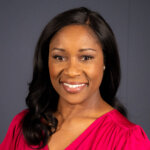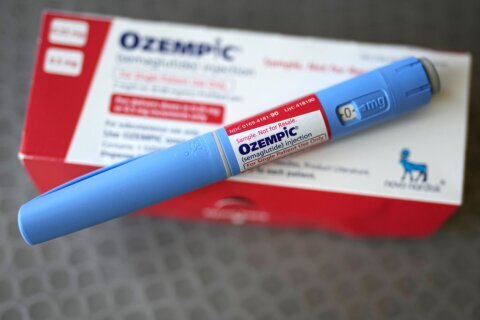Howard University graduate Sydney Sharpe decided to become a dermatologist in high school.
Shortly after developing a skin discoloration issue, she searched for a dermatologist of color near her home in Long Island, New York.
During the hunt, she spotted a clear career path.
“There weren’t any dermatologists I could go to who knew how to help my situation,” Sharpe told WTOP. “I didn’t know what to look for [in a doctor] either. But from that experience, I became interested in dermatology.”
It happens to many patients of color.
Black and brown patients “often don’t know where to turn for skin health advice and 50% are less likely than white patients to see a dermatologist for the same conditions,” according to the American Academy of Dermatology’s website.
However, the association opening the field up to more doctors of color may solve the problem.
It has created a program called Pathways: Inclusivity in Dermatology. It’s a weeklong career development and mentorship course that increases interest in dermatology for Black, Latino and Indigenous premed students as young as high school.
Related:
Last month, George Washington University teamed up with the American Academy of Dermatology and hosted the course on campus.
Sharpe, who wants to become a dermatology physician assistant, attended last year’s session, too.
“I knew what I wanted to do, but I didn’t know how to get there,” she said. “This program helped me figure out how I’m going to take those next steps to position myself.”
Dr. Adam Friedman, a professor and chair of dermatology at George Washington, is one of Sharpe’s mentors.
He said the program primarily focuses on helping students learn career development skills like resume building, networking and assistance applying to medical schools.
In one part of the program, students are required to give a 30-second summary or “elevator pitch” of their career goals.
“A big message is nothing is handed to you,” Friedman said. “But rather, if this is what you want, our job is to give you the tools to pave the path and make those connections so you can get there.” He added that dermatology is one of the least diverse medical fields in the country.
According to the National Institutes of Health, about 3% of dermatologists in the U.S. are Black. And a little more than 4% are Latino, the Dermatology Times reported.
When patients can see and connect with doctors who look like them, their experience and outcomes improve and gaps in care shrink, Friedman said.
“Very often we will see patients so many years later than they should have been seen,” he said of patients of color who allow skin conditions to linger.
“When you have a workforce that is diverse, that trickles down into education. It trickles down into research. It’s about being purposeful in ensuring that there’s diversity.”
The application process for the next Pathways: Inclusivity in Dermatology course at George Washington University opens in the fall.
Get breaking news and daily headlines delivered to your email inbox by signing up here.
© 2024 WTOP. All Rights Reserved. This website is not intended for users located within the European Economic Area.








